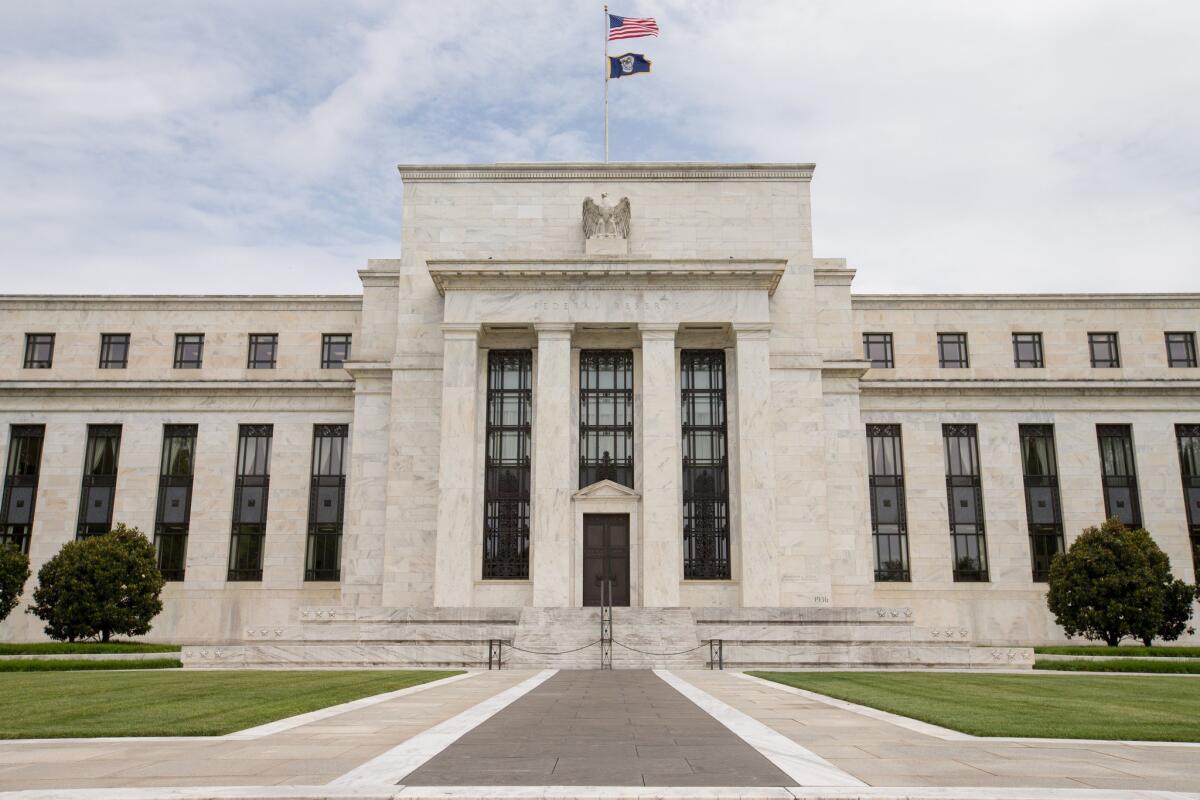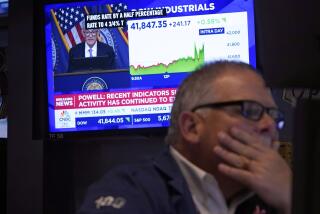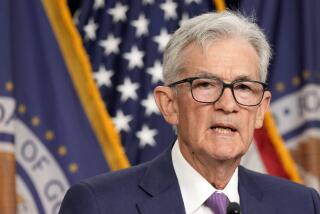Fed unveils aggressive moves to support economy, but is it running out of options?

- Share via
WASHINGTON — The Federal Reserve, with its new round of aggressive action designed to ease credit, is doing everything it can think of to offset the devastating impact of the coronavirus on the American economy.
But a new round of stock market selloffs on Monday made clear that the tools available to the central bank are not enough for what’s demanded by the current crisis. And the Fed is running out of options.
As more large states issue stay-at-home orders and major sectors of the economy shut down, it’s becoming clear that the problem is not so much financial.
It’s a collapse of customers — a sharp decline in consumer spending as Americans choose what many see as medical safety over going out to buy things.
The Fed, already having lowered interest rates to near zero, on Monday announced another series of extraordinary steps, including a commitment to buy an unlimited amount of government bonds, to support lending and help keep businesses and households afloat.
“This is almost the last salvo they have. They’ve reached their limit,” said Chris Rupkey, chief financial economist at MUFG Bank in New York. “If this doesn’t work to support financial conditions and the free flow of credit, I don’t know what will.”
The central bank’s announcement came as somewhat of a surprise, and it initially helped to soften the blow expected to stock markets after Senate negotiations stalled Sunday on a nearly $2-trillion stimulus package.
But by Monday’s close, there still was no agreement and the Dow tumbled 582 points.
The Dow has fallen by 38% from its high just a little over a month ago, wiping out all the gains since President Trump’s election in November 2016.
“The Fed’s clearly leading by example. They’re throwing everything they have at the problem,” said Ryan Sweet, an economist at Moody’s Analytics. “Right now, we need fiscal policy.”
The Fed announcement came as economists gave a sobering assessment of what’s to come.
Morgan Stanley said Monday that it now sees the jobless rate, most recently at a 50-year low of 3.5% in February, surging to 12.8% this spring, which would be the highest since record-keeping began in 1948.
The investment banking firm predicted that total U.S. economic output, as measured by gross domestic product, would contract in the second quarter at an annualized rate of 30% — a 74-year low.
Morgan Stanley economists are not forecasting an economic depression as in the 1930s, in large part because of stronger policy responses and lessons learned from the financial crisis more than a decade ago. But they warned that the current downturn would be far worse than the Great Recession in 2007-09 if the virus peaks later than April or May.
“While great uncertainty remains, it has become clear that our economy will face severe disruptions,” the Fed said on Monday. “Aggressive efforts must be taken across the public and private sectors to limit the losses to jobs and incomes and to promote a swift recovery once the disruptions abate.”
The Fed’s actions include a plan to buy as much U.S. Treasury and mortgage-backed securities as needed to ensure that credit, the lifeblood of the economy, keeps flowing to businesses and consumers.
Credit markets are straining as the sudden stoppage in the U.S. economy has caused an enormous flight to cash. Businesses, with sales and other income shrinking, face a credit crunch.
In response, they are trying to raise as much cash as they can to meet payroll and cover other expenses. To raise cash, many are selling securities in a self-sustaining downward spiral.
Just a week ago, the central bank committed to purchasing $700 billion worth of Treasury and mortgage-backed securities, but it’s already bought hundreds of billions worth.
In expanding the program to an unlimited amount, the central bank can potentially print as much cash as it needs to increase liquidity in the financial system. Buying agency-backed securities and Treasuries from banks would free lenders to make more loans to businesses.
What’s more, the Fed is making it easier for banks to lend money by establishing a variety of lending facilities. Among them is a version used during the 2008 financial crisis that will allow the Fed to backstop student, auto and credit card loans, as well as business loans made through the Small Business Administration.
The Fed also expanded its facilities to include certain kinds of corporate and municipal debt.
And it could provide more targeted lending support to sectors that are at high risk of insolvencies, such as hotels and other hard-hit leisure sectors. The Fed on Monday said it would buy certain commercial mortgage-backed securities, much of which are debt on apartment buildings.
With its interest rate already near zero, the Fed can’t go much lower. Fed officials and economists don’t think going to negative interest rates would help.
“People would hoard cash instead of putting money in banks,” said Sebastian Mallaby, a senior fellow for international economics at the Council on Foreign Relations.
Even though the Fed has used up its traditional firepower, Mallaby and other analysts say the Fed will keep doing what it can.
“What we’re seeing already and what we’ll see more of is that central banks will become more creative about lending directly to corporations,” Mallaby said.
“So instead of cutting interest rates for the economy as a whole, there will be these targeted programs to get zero-cost loans into the coffers of companies that need them because they don’t have any revenues.”
The question is whether even the most innovative monetary maneuvers will meet the current crisis head-on.
More to Read
Inside the business of entertainment
The Wide Shot brings you news, analysis and insights on everything from streaming wars to production — and what it all means for the future.
You may occasionally receive promotional content from the Los Angeles Times.











